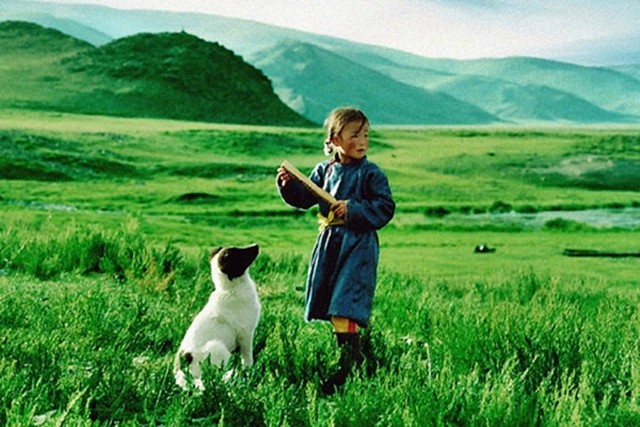
By Jae-Ha Kim
Amazon.com
February 13, 2007
Equal parts documentary, children’s story, and narrative drama, Cave of the Yellow Dog is a beautifully filmed adventure that the entire family will enjoy.
It’s unique on many levels, the most notable being that the charismatic family portrayed in the film are an actual family, and none of them are professional actors.
The eldest daughter (played by adorable Nansal Batchuluun) appears to be about 6 or 7 years old. Her life is nothing like that of an American first grader. She goes away to school, returning home during the summers.
Nansal cares for younger sister and brother, telling them about how homes in big cities have toilets in the house. She collects dried dung for the family’s fire pit and helps her mother cook. And when her father goes to town for a few days, it is Nansal who takes over his chore of leading a herd of sheep to graze in a fuller pasture miles from her home.
Nansal is mature for her age, but she is still a child who can’t resist cute animals. So when she finds a small black and white pup holed up in a cave, she adopts him and names him Zochor (the Mongolian equivalent of Spot). Her father–worried that the dog may have grown up feral with a pack of wolves–forbids her to keep the puppy and the viewer is never certain whether Nansal and Zochor will be able to remain together.
What sets Cave of the Yellow Dog apart from films such as Lassie and Old Yeller is the breathtaking buttes, vistas, and scenery showcased in the film.
Watching the apple-cheeked children squeal with laughter as they play in front of their yurt–their collapsible and movable home–viewers get the sense that they wouldn’t choose any other life, even though theirs seems filled with hardship for those of us accustomed to the comforts of modern-day living.
The Palme d’Or winner at the Cannes Film Festival, this movie is heartwarming and pragmatic at the same time.